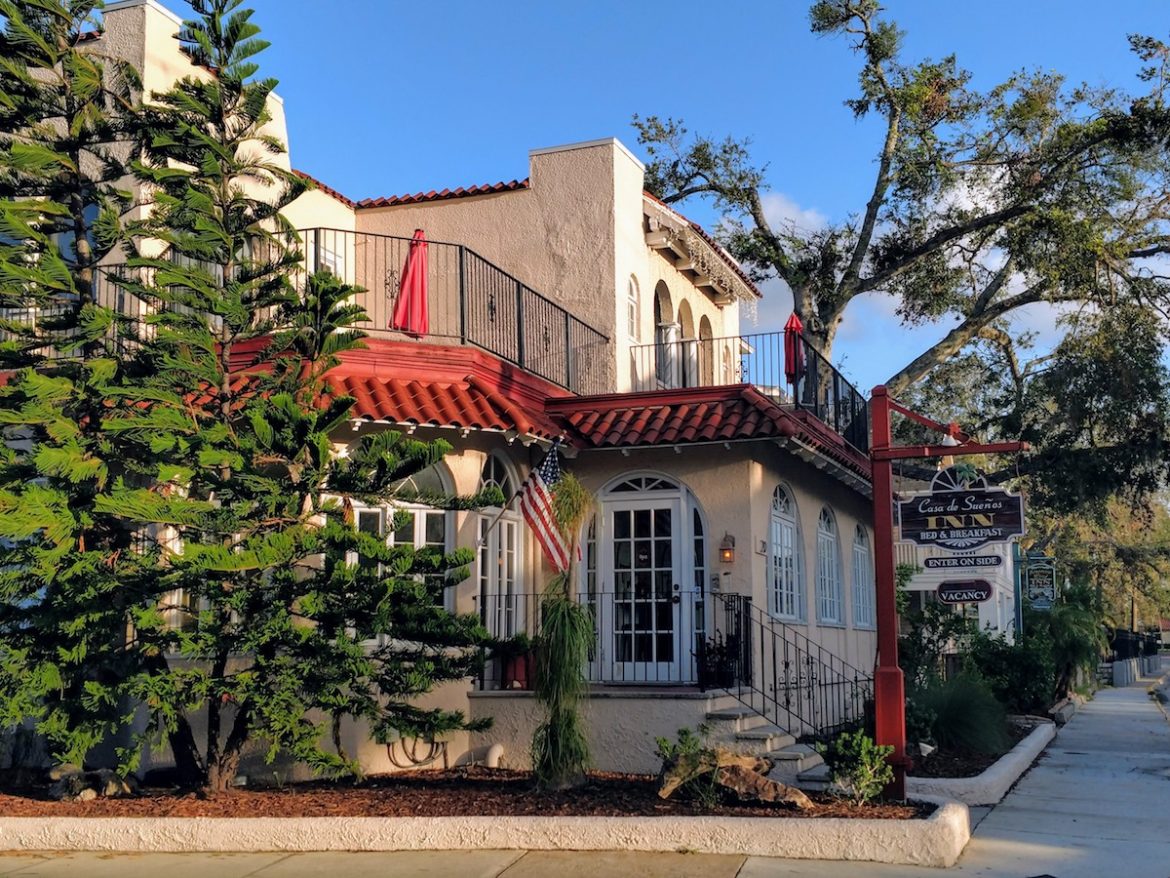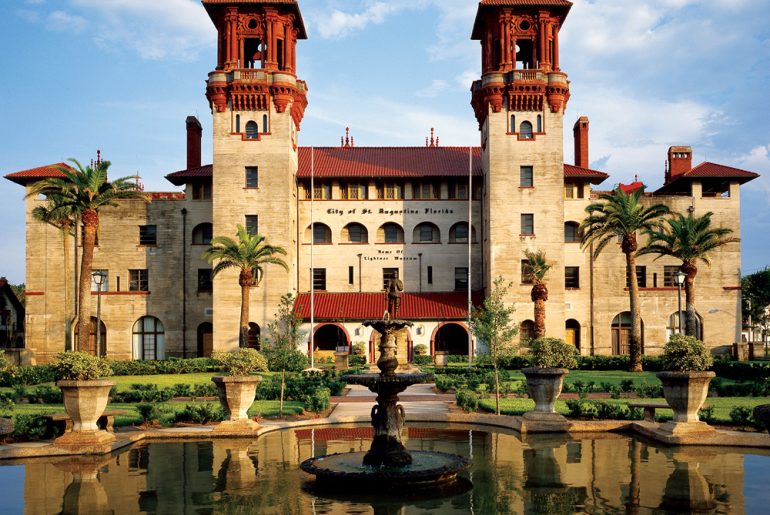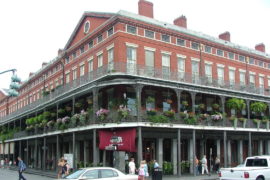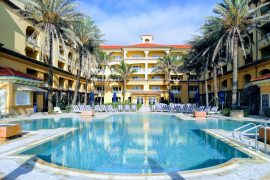It’s not called Old City for nothing. St. Augustine, Florida, was settled in 1565, making it the oldest European-settled city in the United States. Unlike some cities that seem hell-bent on destroying their historic buildings (I’m looking at you, Atlanta. It wasn’t all Sherman’s fault.), there’s plenty of historic locations still standing in this city on the west coast of Florida. With no set agenda, I loved meandering along cobblestoned streets through the 144-block historic district, peeking into charming courtyards, stepping into inviting shops and admiring the Spanish Colonial architecture to get a taste of history in St. Augustine.
My first trip to St. Augustine many years ago wasn’t so pleasant. In fact, it was one of the places my family and I visited that still reigns in our hearts as our Worst Trip Ever. It wasn’t St. Augustine’s fault – it had more to do with an impending hurricane, a broken-down car and a big fight over dinner about hush puppies. It ended with my daughter saying, “When we get home, I’m just going to kiss the ground and never leave.” Fortunately, despite that one awful experience, she became an avid traveler. Anyway, it was about time to revisit this charming coastal town and make more pleasant memories.
There’s plenty to see and tour in St. Augustine, and when you’re ready for a bite to eat or an adult beverage, here are five places to get a taste of history, reflect on the city’s Spanish influence and its past as the winter playground of the rich during the Gilded Age, when it was known as the American Riviera.
Lightner Museum
The Lightner Museum is housed in what was originally the Alcazar Hotel, built in 1889 in a Spanish Renaissance Revival style to handle overflow guests from the nearby Ponce de Leon Hotel, which now houses Flagler College. Back in the Gilded Age (from around 1870s to 1900), it was fashionable for the well-heeled class to travel to St. Augustine for the winter season. Among those folks “wintering” and “summering are verbs,” which require relocation of your life for several weeks, along with your servants, to another location more suitable for the weather.
Henry Flagler, the founder of Standard Oil, is known as the father of St. Augustine as well as Miami and Palm Beach. He had first traveled to Florida on the advice of a doctor for his first wife’s health. After she died, he remarried and traveled to St. Augustine, but was unimpressed with its accommodations.
He eventually began building hotels in Florida with the desire to create an American Riviera. He then began building trains to transport guests to his hotels.
The Ponce de Leon Hotel was completed in 1888 and was one of the first hotels to be wired with electricity, as Flagler was friends with Thomas Edison. People were afraid of the light switches at first, so he had to hire staff to turn them on and off. The hotel was so successful, he soon built the Alcazar Hotel right across the street.

Referred to as “the castle of happy returns” the Alcazar Hotel welcomed guests who chose to stay there for weeks during the winter season. In addition to golf, they could enjoy a bowling alley, tennis courts, gym, bicycle academy, massages, archery ranges and the world’s largest indoor swimming pool. Women could visit the pool in the morning while the men golfed, then the men would go in the afternoon.
For a real treat take the Upstairs/ Downstairs Tour at the Lightner Museum, which highlights the stark differences between how the upper class and their servants traveled. It’s the only way to see the fourth floor of the property, where the staff stayed in small, sparse rooms.
Stroll through the floors of the Lightner Museum for its rather varied collection that includes everything from a shrunken head to hooked rugs to a collection of salt and pepper shakers. I loved a collection of brightly colored beaded purses displayed on a hot pink wall. We listened to the lively tunes of a German Orchestrion from 1900, which replicated the sounds of an entire orchestra and was operated by a handcrank by one of the museum staff.
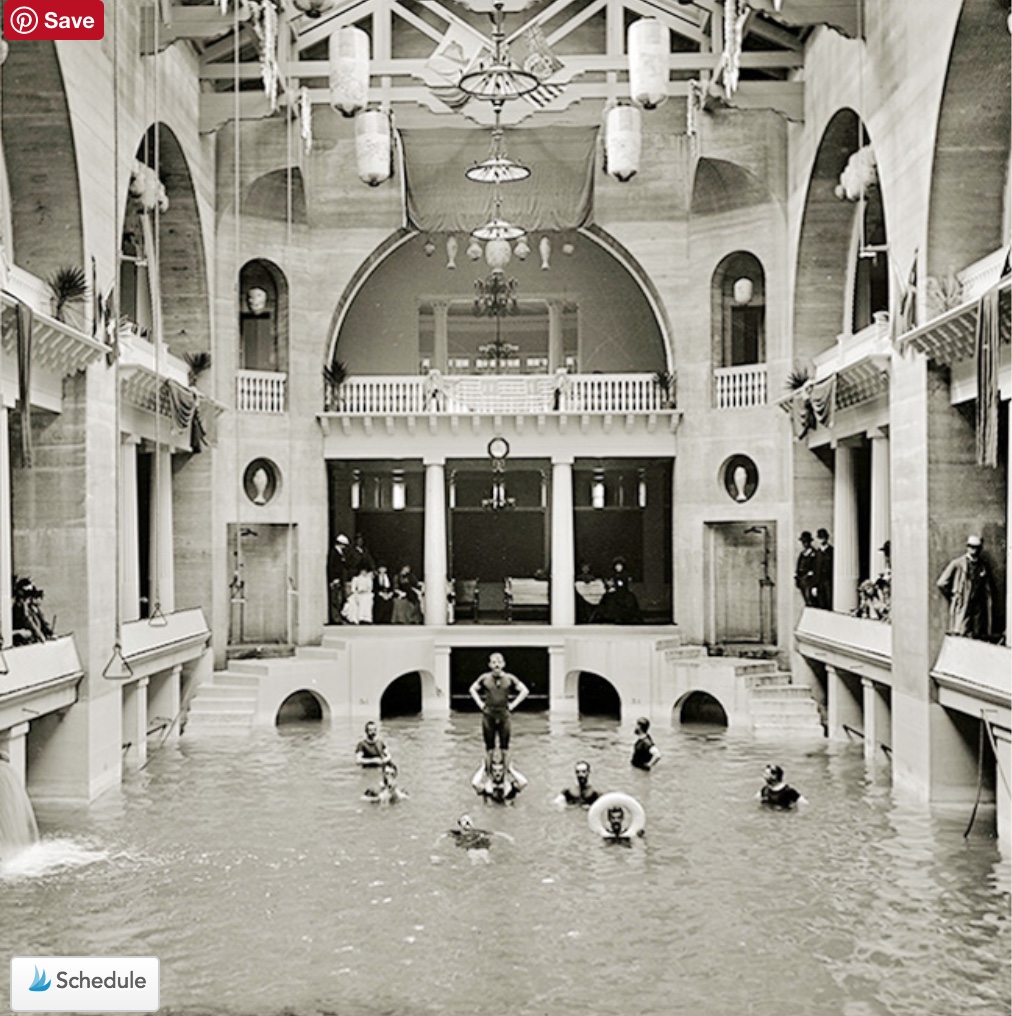
Have lunch at Café Alcazar, located in what was a swimming pool back in the day. Women could visit the pool in the morning while the men golfed, then they would go in the afternoon.
Columbia Restaurant
With its Spanish architecture, Spanish-style fountain and Spanish/Cuban cuisine, Columbia Restaurant is the perfect place to pay tribute to the Spanish influence on St. Augustine.
Casimiro Hernandez, Sr opened the original location in 1905 in Ybor City in Tampa as a small cafe selling Cuban sandwiches and coffee to the local workers who made cigars, giving rise to its claim as the oldest restaurant in Florida. That restaurant grew and was passed down in the family, where it remains today run by two brothers in the fourth generation.
Order a mojito or daiquiri and settle in for a perusal of the very lengthy menu. I recommend you start with the 1905 salad, tossed right at your table. Yeah, it’s a throwback with its iceberg lettuce, julienne ham and Swiss cheese, but the garlic dressing, the nod to history and the presentation make it worth it.
Tapas selections include empanadas from the grandmother’s recipe, black bean cakes and crab cakes with a Cuban twist. Multiple pages of the menu are devoted to seafood, pork, beef and chicken dishes. It’s Florida so I had to order seafood, partially in penance to restaurant meals in Florida when I was growing up. I love seafood now, and just about all food, but was a picky eater as child. During our yearly vacations to Florida, when we ate out, the rest of the family ordered seafood dishes. I always ordered fried chicken. It took a lot longer to cook and didn’t help my many years of being a pleasantly (ha!) plump child.
I went for the Red Snapper Adelita, grilled and topped with artichoke hearts, sun-dried tomatoes and onions. Paella lovers have their choice of six versions of the Spanish dish including three that are vegetarian. Ask to sit in the large two-story enclosed courtyard and stroll around afterwards to see the mosaic accents throughout its many rooms and check out the gift shop.
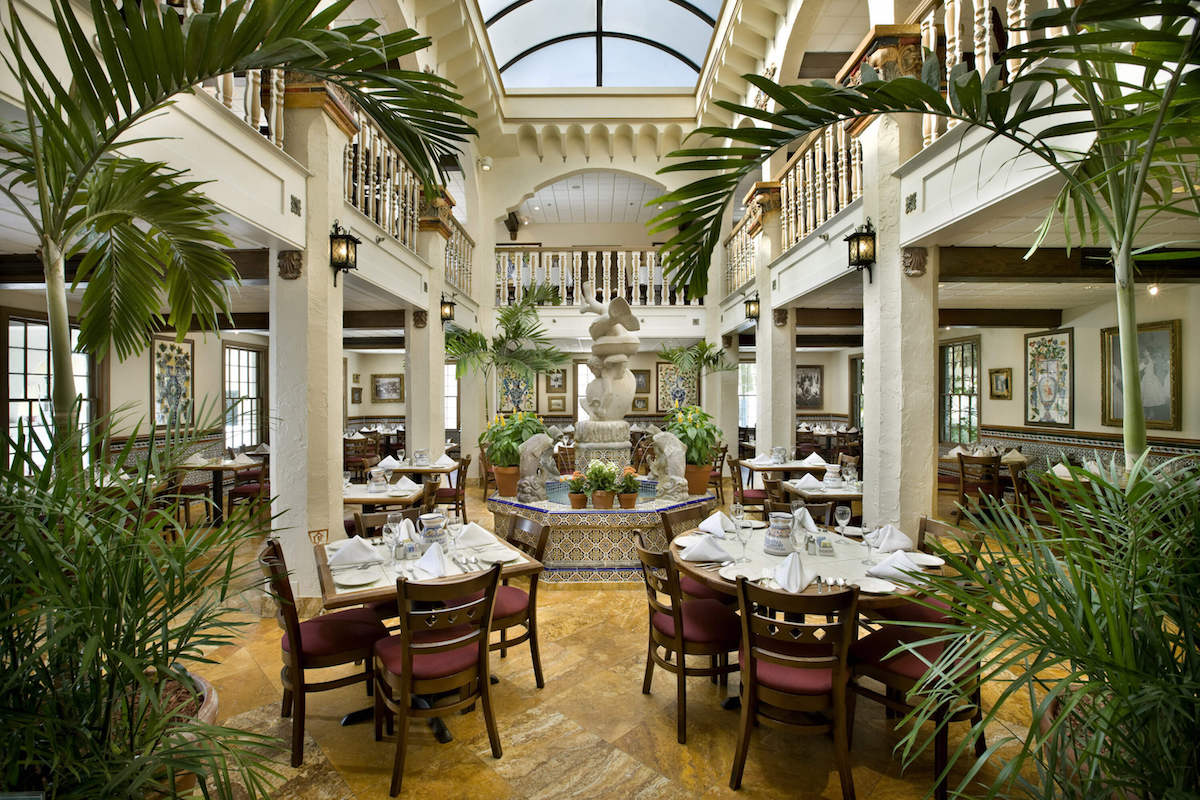
St. Augustine Distillery
Although it just opened in 2014, St. Augustine Distillery has become one of the city’s most visited spots. It specializes in small batch whisky, rum, gin and vodka using locally grown sugar cane, wheat, corn and citrus.
Its popularity may be due in part to its free tours offered every 30 minutes, followed by samples of cocktails made with their spirits. No reservation is needed. During the tour you’ll watch small batch spirits being made and learn about the history of distilling in Florida.
After the tour be sure to visit the large gift shop, well supplied with alcohol-related accessories and mixers. I couldn’t resist buying some Old Fashioned Mix for my husband, who is a fan of the bourbon-based cocktail. Just pour it in a glass and add four parts bourbon and you’re ready to toast.
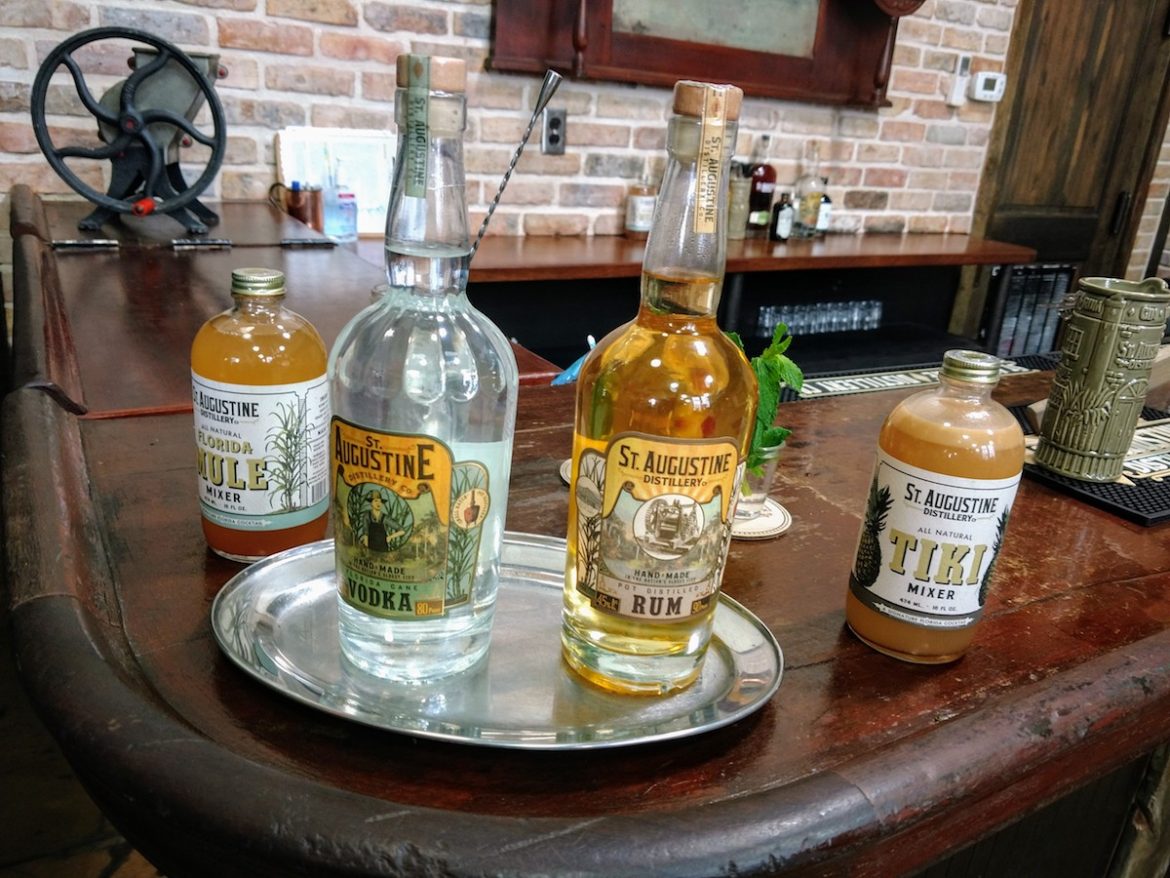
Ice Plant Bar
The St. Augustine Distillery shares a building with the Ice Plant restaurant, so before or after your tour, head over there for lunch or dinner. Menu items include blackened tacos, shrimp ceviche, shrimp and grits, and Frogmore Stew.
The drinks menu includes cocktails made with St. Augustine spirits, of course. I had to try a refreshing Florida Mule, made with St. Augustine vodka.

The building dates back to 1927 where it housed a factory to manufacture the ice needed to refrigerate shrimp and fish caught by local fisherman in the days prior to refrigeration. Guests can still see the giant crane that would pick up the huge blocks of ice to be broken down into smaller pieces. I imagine a few of those ended up in the cocktails of guests at the Ponce de Leon and Alcazar as well.
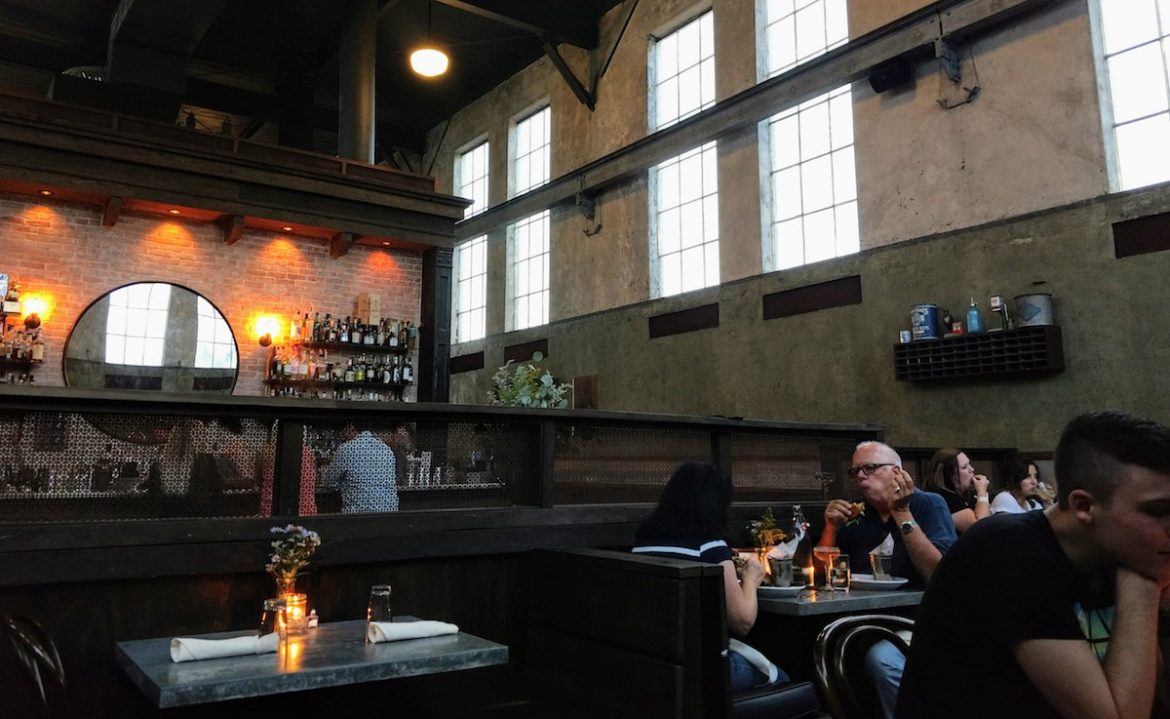
Casa de Suenos Bed & Breakfast
I felt like I was visiting an especially thoughtful aunt with a beautiful home when I checked into Casa de Suenos and saw a vase of fresh flowers and a decanter with sherry and snifters on a table in my room. An aunt who wanted to make sure I was well-fed 24 hours a day. That nice touch was just the beginning of all the complimentary food and beverage items you can enjoy at this Spanish-style bed and breakfast, whose name means house of dreams.
Every evening there’s a complimentary social hour from 5-6 with delicious appetizers and a selection of local wines and beers. Later that evening desserts made at the inn are set up in the dining room. I missed dessert time when I was there, but returned home from an evening out to find a dessert left in my room. And if you’re attacked with the late-night munchies, there’s a snack basket left in the dining room every night.
In the morning, guests are greeted with a large breakfast buffet that includes two hot entrees. On the weekends, it includes complimentary Blood Marys and Mimosas.
The inn has seven rooms on two floors, each a slightly different configuration and each with a private bath. The three rooms on the top floor have private balconies with seating.
The building was built as a private residence, probably around 1904, in a prestigious neighborhood, and massively renovated. After stints as a funeral parlor and offices, it was opened as an inn in 1998.
You can request a visit to the beach where they will set up chairs and umbrellas and supply you with beach towels.
Casa de Suenos is in a perfect location to explore the historic district of St. Augustine. Just about everything is walkable from there.
